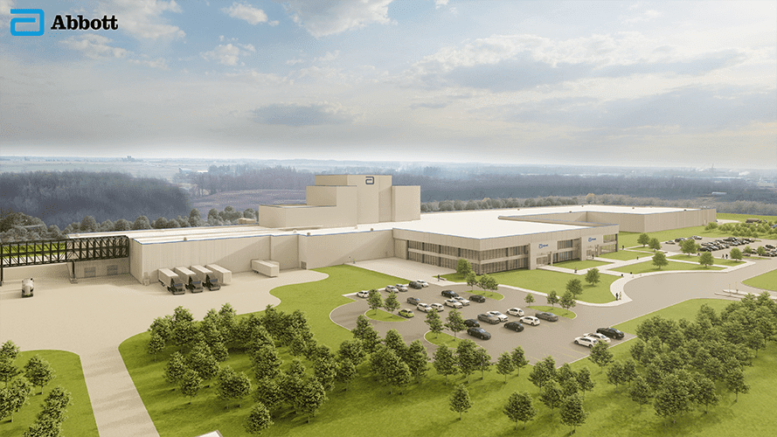By JAN McLAUGHLIN
BG Independent News
As Abbott Laboratories prepares to build a plant and bring 450 jobs to Bowling Green, company officials asked for permission to have more fencing and less greenery than required by city zoning.
On Wednesday evening, the Zoning Board of Appeals voted unanimously to grant the company’s requests.
Abbott owns two parcels totaling 170 acres on the north edge of Bowling Green, at the southeast corner of Ohio 25 and Nims Road.
Abbott is a global company that designs and produces diagnostic and medical devices and powder nutritional supplements. The Bowling Green plant will produce specialty and metabolic formulas, and nutritional products for people with extreme allergies and dietary restrictions.
The 450 jobs to be created are said to be “high quality” positions in finance, quality control, human resources, information technology and manufacturing.
According to city zoning code, the maximum height of front yard fencing is 4 feet. But Mihai Caratas, representing Abbott, said FDA food safety rules require the company to provide fencing and video surveillance around such facilities. Abbott standards require a 7-foot high fence around the entire perimeter of the facility for security and personnel safety.
The fence bordering Route 25 and the portion of Nims Road near the intersection with Route 25, will be decorative and the rest will be chainlink. The fencing will be far enough back from the roads so it doesn’t obstruct views, Caratas said.
The company also requested that it not be required to meet the city’s tree and shrub buffering requirements.
Trees and shrubs provide habitat for birds, rodents and other animals, Caratas told the board. FDA regulations and Abbott standards require the facility to maintain a “high standard of cleanliness” within the facility and on the grounds.
“Abbott is requesting relief from the requirement to provide trees and shrubs along the streets and in buffer zones to minimize the impact of pests and vermin in our facility,” the variance request stated.
Caratas explained the company is planning to plant ornamental grasses on some mounding, plus some trees and shrubs along Route 25.
Zoning board member Hobart Johnson stated that ornamental grasses can also attract small animals. He asked Caratas if Abbott might consider a compromise of putting in some ornamental plantings. Caratas said that could be a possibility.
Tim Emmerich, who chaired the meeting, said this seemed to be a case where federal regulations and the local zoning code don’t mesh.
All the board members agreed to the variances.
“We’re extremely lucky to have Abbott as a member of our community,” Jeff Crawford said.
“Welcome to BG,” Judy Ennis said to Caratas.
In other business Wednesday evening, the Zoning Board of Appeals approved three other variance requests:
- From Todd Kuhl, at 602 W. Wooster St., to allow a parking pad which encroaches 6 inches into the required 3-foot setback. Kuhl explained the necessity of the new parking pad, showing the zoning board members a sample of the large black walnuts that drop on his car three months of the year in the previous parking area.
- From Donald Simmons, at 203 Biddle St., to allow the installation of a 6-foot fence – rather than the allowed 4-foot height – along Clough Street. Simmons cited the heavy traffic on Clough Street, and said he wants to keep everyone passing his house from seeing into his backyard.
- From Dexter and Katherine Lee, of 644 Sand Ridge Road, who want to build an addition onto their home that would encroach 6 feet into the required 10-foot side yard setback.
In all the cases, neighbors supported the granting of the variances.



